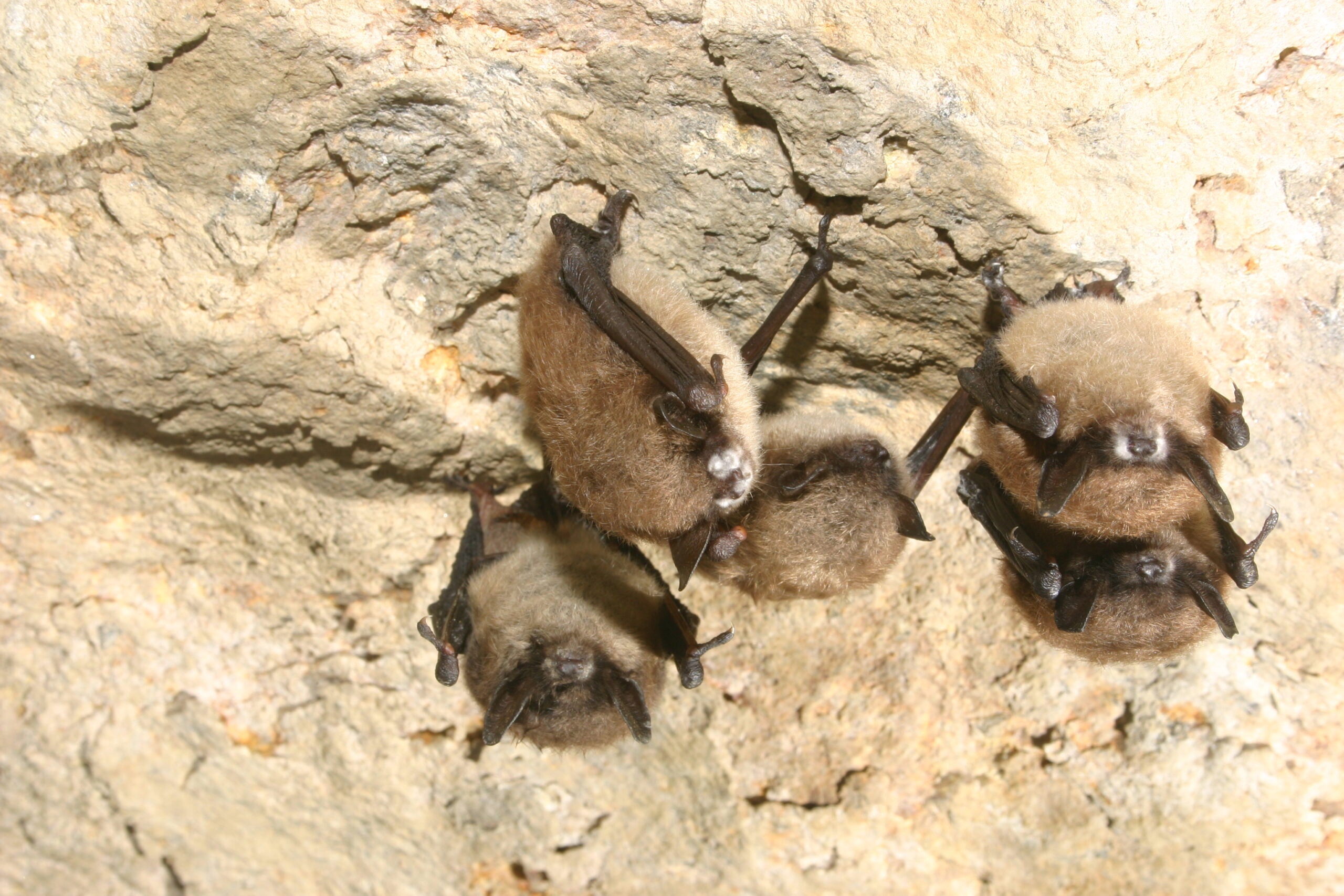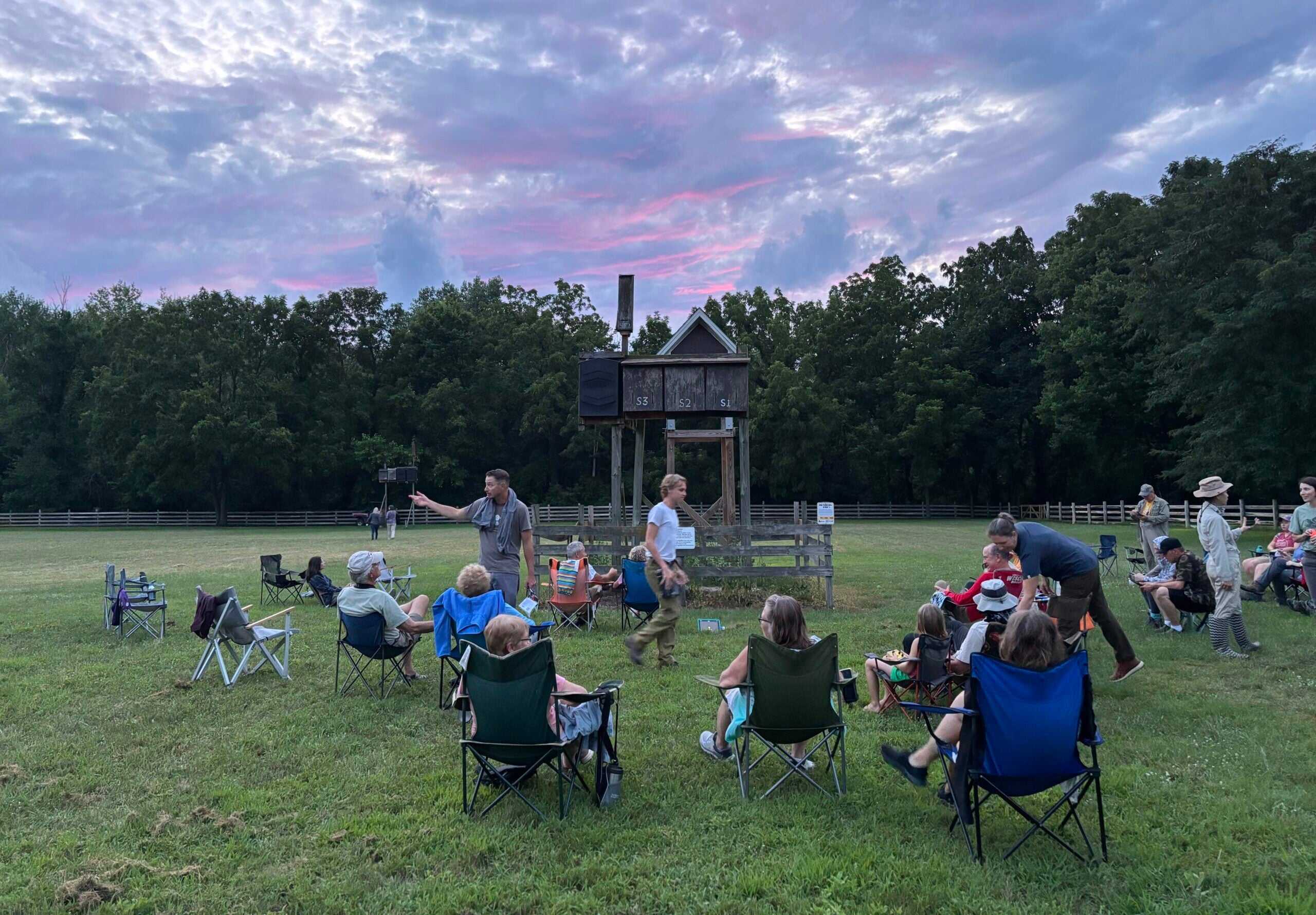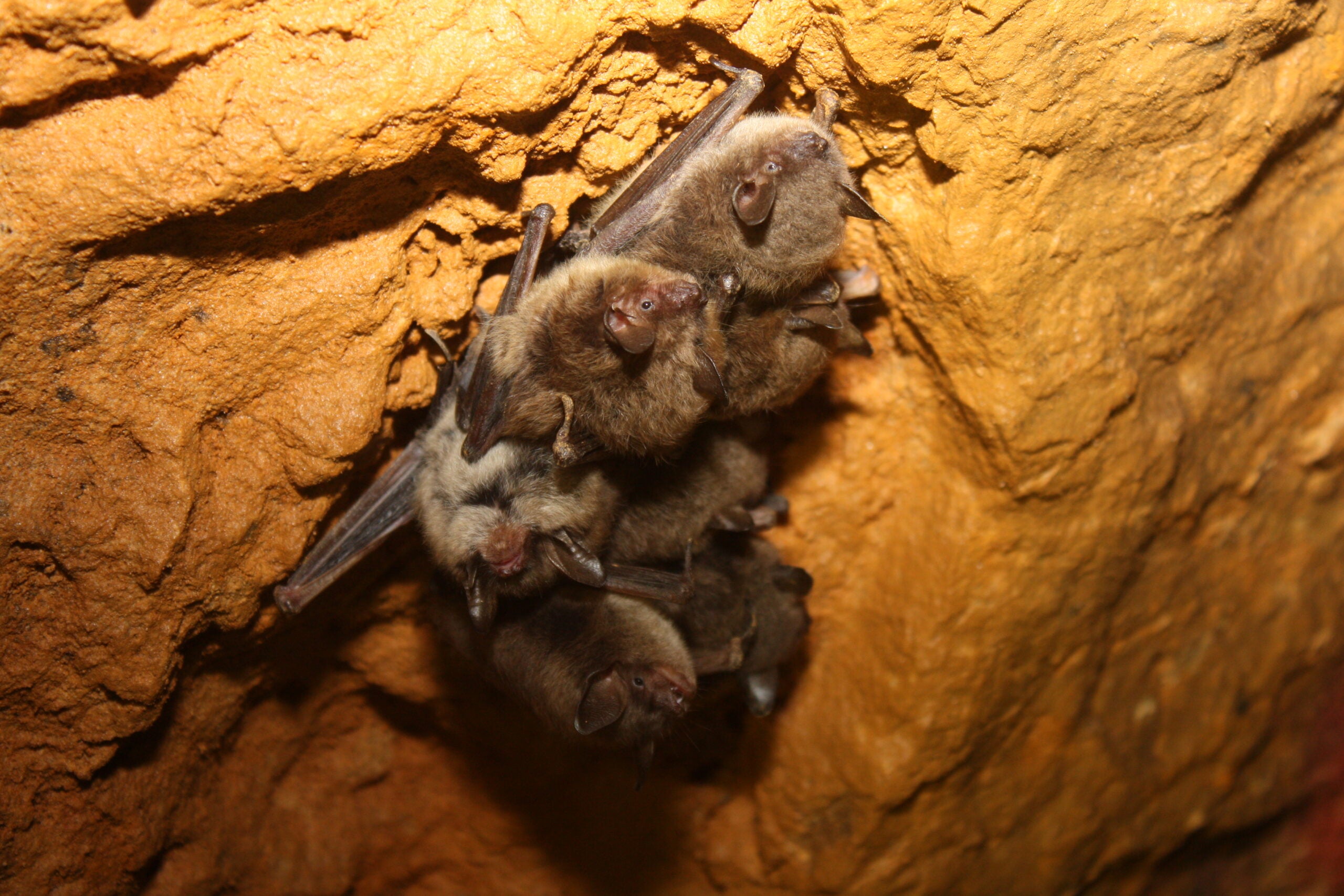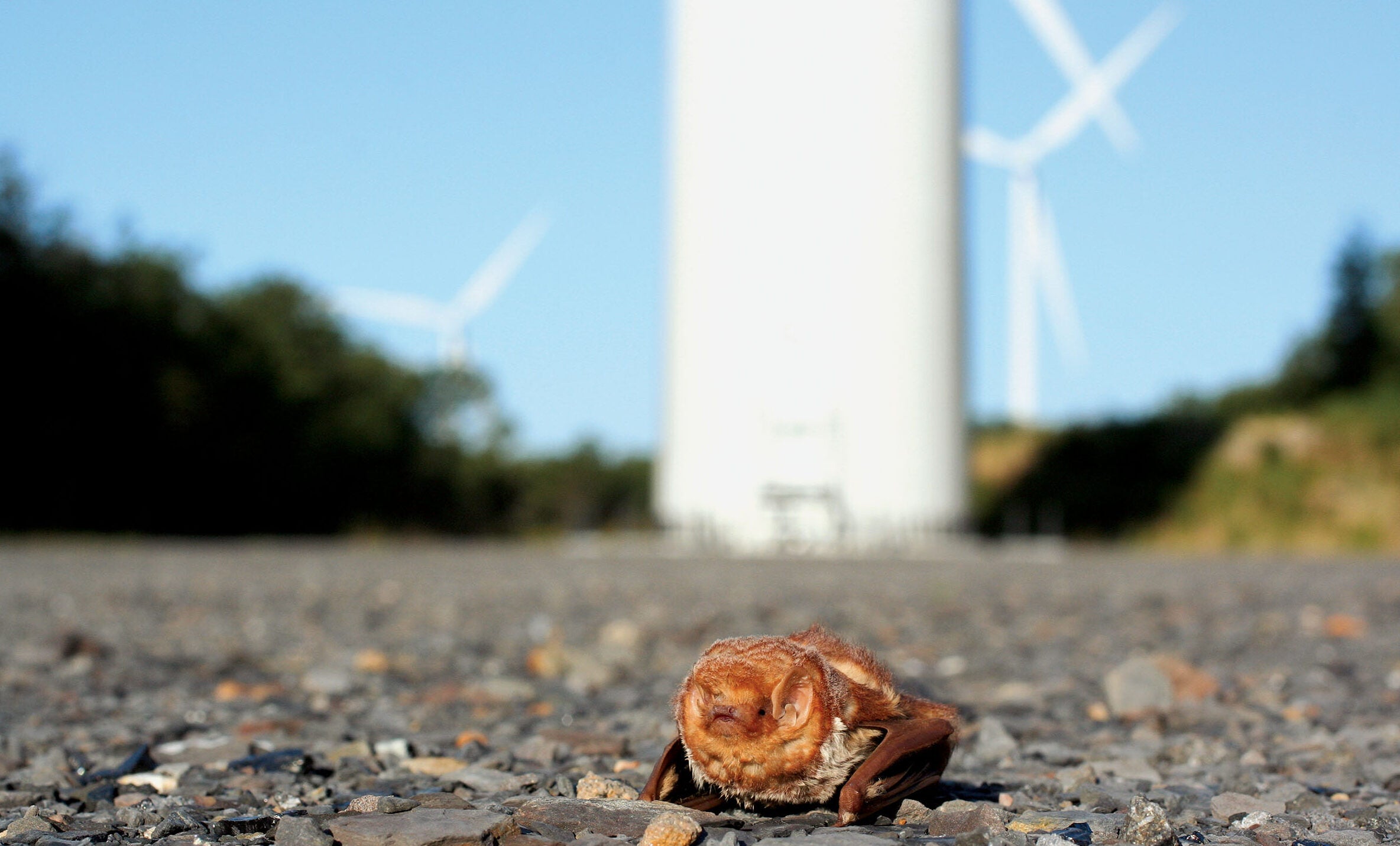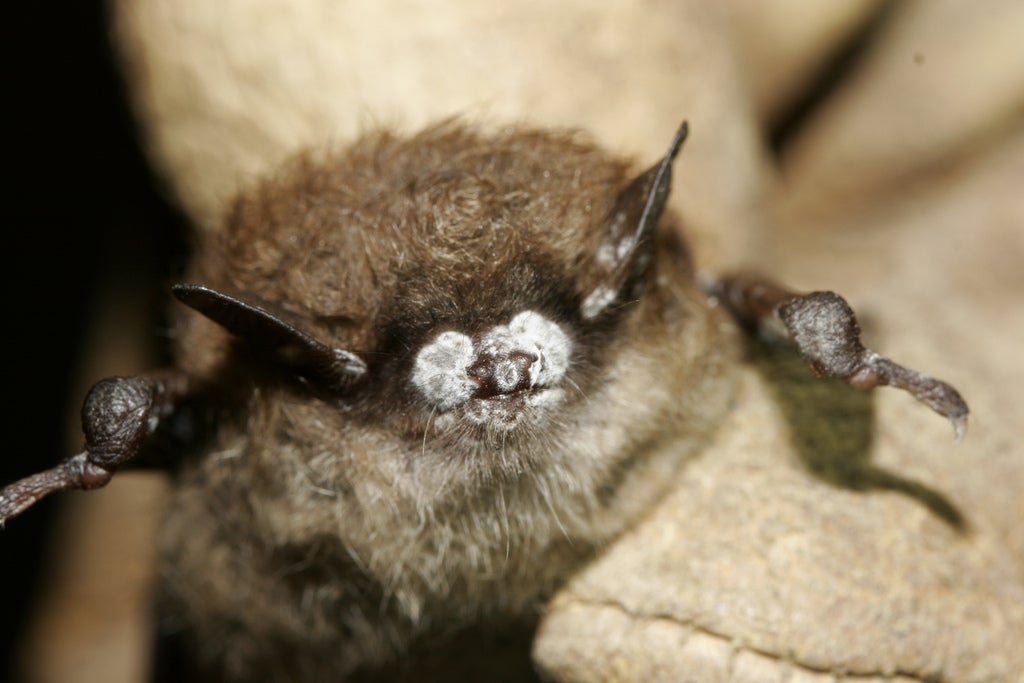A new strategy to combat the deadly white-nose syndrome decimating bat populations in Wisconsin and other states is being studied by researchers at the University of Wisconsin-Madison, the U.S. Geological Survey and U.S. Fish and Wildlife Service.
White-nose syndrome is a fungal infection that keeps bats awake as they try to hibernate during the winter months, which leads to them burning through fat stores and starving to death. The fungus was first discovered in New York in 2006 and first found in bats in Wisconsin in 2014.
Populations of northern long-eared bats, in particular, have declined by 97 percent or more across two Canadian provinces and 27 states including Wisconsin. That’s raised alarms about risks to biodiversity and agriculture as bats eat pests targeting crops and even pollinate some plants. Northern long-eared bats were placed on the endangered species list by the Biden administration in 2022.
News with a little more humanity
WPR’s “Wisconsin Today” newsletter keeps you connected to the state you love without feeling overwhelmed. No paywall. No agenda. No corporate filter.
On Tuesday, the National Science Foundation and Paul G. Allen Family Foundation announced a $2 million grant for research at UW-Madison to see if a combination of a vaccine already developed by the university and an existing drug used to treat humans could turn the tide for Wisconsin’s bats.
Bruce Klein is a professor of pediatrics, medicine, medical microbiology and immunology at UW-Madison. He’s part of the team that developed the vaccine, which was initially aimed at treating a fungal infection in humans known as blastomycosis. Klein said lab tests showed it could also stimulate immunity in bats to the fungus that causes white-nose syndrome.
More recently, Klein said UW-Madison graduate student Marcos Isidoro Ayza has been studying how receptors in bats’ skin cells “serve as a trap door” for the fungus.
“And it (the fungus) has strategies to maintain itself inside the cells that we’re learning about,” Klein said. “And there are approved drugs that can target these receptors, some actually FDA approved, that have been used in human patients for treatment of cancer.”
Klein said he couldn’t name the drugs or explain the process further while the study is ongoing. He said he’s hopeful the research will be completed and submitted for publication within the next six to nine months.
Outside the lab, Klein said his team is collaborating with the U.S. Geological Survey and U.S Fish and Wildlife Service to study how bats in captivity react to specific dosages. With that data in hand, he said the next step will be finding the best way to treat bats in the wild.
“We don’t invite the bats to queue up, you know, roll up their wing sleeves,” Klein said. “So, that is a little bit tricky.”
He said researchers are interested in developing formulations of the compounds that can be sprayed and adhere to bats’ fur as they enter caves for hibernation. He said northern long-eared bats have a useful habit of hibernating in tight clusters and grooming one another.
“So if we don’t spray all the bats, those that are grooming one another will presumably be exposed to the vaccine and ingest it through grooming,” Klein said.
Wisconsin Public Radio, © Copyright 2026, Board of Regents of the University of Wisconsin System and Wisconsin Educational Communications Board.
